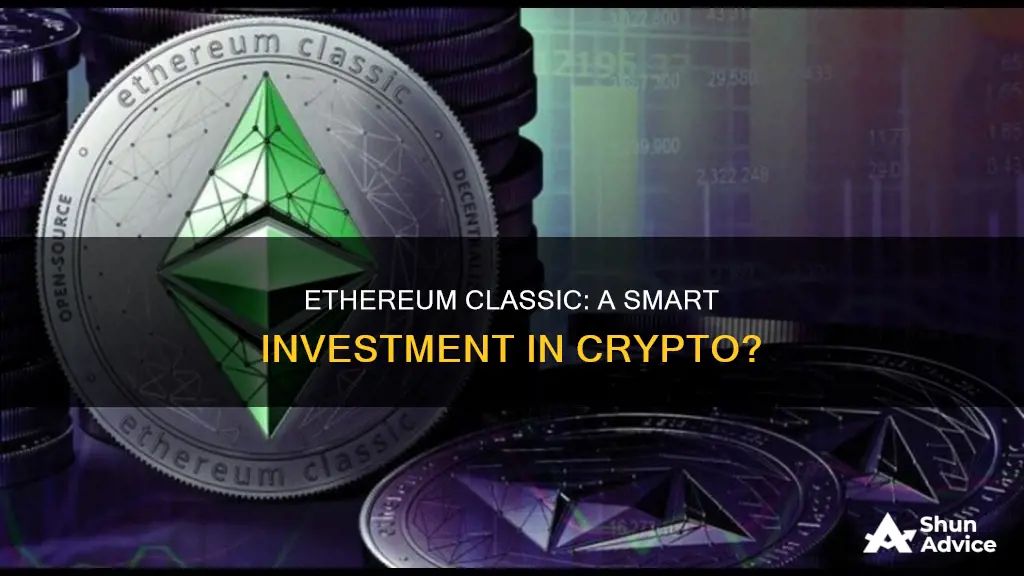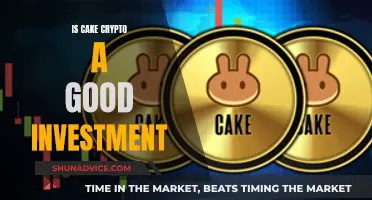
Ethereum Classic (ETC) is a cryptocurrency that emerged from a hard fork in the original Ethereum blockchain in 2016. The fork was a result of a hack on the Decentralized Autonomous Organization (DAO), which allowed attackers to withdraw $60 million worth of Ether. The Ethereum community was divided on how to respond to the hack, with some arguing for a hard fork to reverse the hack and return the stolen funds, and others believing that code is law and that the blockchain should not be altered. Ultimately, the blockchain that decided to keep records unaltered was renamed Ethereum Classic, while the other became the Ethereum we know today.
Since its creation, Ethereum Classic has struggled to gain popularity and has faced several 51% attacks. It has also lagged in terms of user adoption, Initial Coin Offerings (ICOs), and Decentralized Finance (DeFi) growth. However, it has a dedicated community that believes in the immutability and decentralization of the blockchain and condemns the decision to hard fork Ethereum in 2016.
When considering whether to invest in Ethereum Classic, it is important to weigh the risks and potential rewards. On the one hand, Ethereum Classic has a lower price than Ethereum, which could make it more attractive to investors. It also has a limited supply of coins, which can increase scarcity and demand. On the other hand, Ethereum Classic has faced security concerns and lacks the same level of community support and developer ecosystem as Ethereum. Additionally, it is not as widely adopted and may not have the same growth potential as Ethereum.
Overall, investing in Ethereum Classic carries more risk than investing in Ethereum due to its smaller community and security issues. However, it could still be a good investment for those who believe in the immutability of the blockchain and its potential to grow in the future.
What You'll Learn

Ethereum Classic's history and its controversial split from Ethereum
Ethereum Classic (ETC) is the original Ethereum blockchain that was launched in July 2015. It is a decentralised, open-source, blockchain-based distributed cryptocurrency that supports smart contracts.
In 2016, a hack on a third-party project called The DAO, which was built on the Ethereum blockchain, resulted in the theft of $50 million worth of Ether. This event caused a split in the Ethereum community, as members disagreed on how to handle the hack. The majority of the community wanted to implement a hard fork to reverse the hack and return the stolen funds to their owners. However, a minority of members, who became the Ethereum Classic community, opposed the fork and believed that the blockchain should not be altered, adhering to the principle of "code is law".
As a result of this disagreement, two separate blockchains were created: Ethereum (ETH), which implemented the hard fork and altered its blockchain history to erase the DAO theft, and Ethereum Classic (ETC), which continued as the original, unaltered version of the Ethereum blockchain.
The split highlighted a philosophical difference between the two communities. Ethereum Classic advocates for blockchain immutability and the concept that "code is law", while Ethereum prioritises extra-protocol intentionality, decentralised decision-making, and conflict resolution.
Since the split, Ethereum Classic has sought to differentiate itself further from Ethereum, with the two networks' technical roadmaps diverging. Ethereum Classic has focused on maintaining its decentralised governance approach and proof-of-work consensus algorithm, while Ethereum has transitioned to a more centralised system and a proof-of-stake algorithm.
The controversy surrounding the split and the subsequent differences in philosophy and development have contributed to the distinct identities and trajectories of Ethereum Classic and Ethereum.
Turtlecoin: A Wise Investment Choice?
You may want to see also

Ethereum Classic's future and its potential for growth
Ethereum Classic (ETC) is a decentralised computing platform known for its commitment to the original principles of blockchain technology. It enables the execution of smart contracts and decentralised applications (dApps) without interference from third parties. Born from a split in the Ethereum blockchain in 2016, Ethereum Classic has maintained the legacy of the original Ethereum network, emphasising immutability and the philosophy that "Code is Law".
Ethereum Classic's future is uncertain, but there are a few key things to consider when evaluating its potential for growth:
- Upgrades: ETC's development is supported by IOHK, and their recent updates suggest a focus on improving performance rather than introducing new features. This approach may lead to a more stable and secure platform, potentially resulting in a slow price increase over time.
- Security: ETC has been the target of several 51% attacks, which have damaged its reputation. However, with the implementation of Mantis by IOHK, the platform is now less vulnerable to such attacks, making it safer for investors and miners.
- Interoperability: ETC has been working towards creating closer ties with Ethereum and other blockchains. This increased interoperability could lead to improved functionality and a wider user base for ETC.
- Community and Adoption: ETC has a dedicated community of developers, users, and investors. However, it lags behind Ethereum in terms of user adoption, Initial Coin Offerings (ICOs), and DeFi growth. ETC also faces competition from other smart contract platforms, such as EOS, NEO, and Polkadot.
- Price History and Market Trends: ETC's price history shows that it tends to follow market trends. When Bitcoin and other altcoins are performing well, ETC often follows suit. ETC's price is also heavily influenced by broader cryptocurrency market trends and the movements of major cryptocurrencies like Bitcoin and Ethereum.
- Monetary Policy: ETC has a deflationary monetary policy, with a total supply capped at 210 million ETC. This limited supply may increase ETC's scarcity and value over time, making it more appealing to investors.
- Industry Expert Opinion: Industry experts have varied opinions on ETC's future. Changelly predicts ETC's price to range between $238.18 and $284.09 by 2030, while Coincodex predicts a more conservative range of $20.69 to $74.72. These projections highlight the expected growth trajectory of ETC, but actual results may differ.
In conclusion, while Ethereum Classic has its strengths and a dedicated community, it also faces several challenges and strong competition from other platforms. Its future growth will depend on various factors, including security enhancements, interoperability improvements, community support, and overall market trends. Investors should carefully consider these factors and conduct their due diligence before making any investment decisions.
Strategies for Investing in New Crypto Coins
You may want to see also

Ethereum Classic's security and scalability concerns
Ethereum Classic (ETC) is a blockchain that makes the choice of remaining fully integrated and deliberately unscalable as a trade-off for being as secure as possible. In this context, "secure" means not disaggregating the Ethereum standard components but remaining fully integrated and fully replicated to minimize the risks of the components talking to each other through less secure means.
ETC is highly secure because it uses proof of work and full replication of the database as its consensus model. Indeed, ETC is the largest and most secure smart contracts blockchain in the world. This makes it optimal as a base-layer blockchain system as it may be used for settlements and high-value, low-volume use cases.
As proof of work does not enable scalability in the form of high transaction volumes, ETC may have other systems in higher layers that may process larger transaction volumes but settle inside ETC. This design is the most popular in the industry to achieve scalability, with examples including the Lightning Network as a layer 2 of Bitcoin and rollups as a layer 2 of Ethereum.
As the largest and most secure smart contracts network in the world, ETC has one thing that differentiates it and makes it unique. Unlike Bitcoin, Dogecoin, and Litecoin (the other large proof-of-work blockchains in the world), ETC is programmable with smart contracts. This means that dapps may exist inside its highly secure environment.
However, ETC has been successfully 51% attacked a number of times, making it extremely risky as an investment. A 51% attack occurs when a large enough miner gains more than 51% control over the network's hash rate, then uses it to double-spend and steal coins.
To improve security, ETC has been considering the implementation of Ethereum's upcoming upgrade, Ethereum 2.0, which introduces a new consensus mechanism called Proof-of-Stake (PoS). PoS has the potential to significantly increase scalability by reducing energy consumption and allowing for more efficient block validation.
Tracking Bitcoin Investments: Is It Possible?
You may want to see also

Ethereum Classic's price predictions and investment outlook
Ethereum Classic (ETC) is a blockchain-based platform that supports smart contracts and decentralised applications. It was created in 2016 when the original Ethereum blockchain was hacked, and a team picked up the abandoned original chain and renamed it Ethereum Classic.
Ethereum Classic has a market cap of $3.26 billion and is currently ranked 20th, as per CoinMarketCap. ETC coins are mined and there is a limited supply of 210,700,000, with 130,939,765.48 coins currently in circulation. ETC is predicted to reach its peak supply of 210 million by 2065.
Ethereum Classic's price has been volatile. It started 2021 at $5.70 and reached an all-time high of $176.16. ETC's price has been influenced by news related to Bitcoin, and it has also been affected by the wider crypto market trends.
Looking ahead, some believe that Ethereum Classic might hit the $50 mark by the end of 2022. More conservative estimates place ETC's price at $17.30 by the end of this year.
In the longer term, Ethereum Classic could enter the top 10 cryptos list in the next five years and start competing with leading altcoins. By 2025, ETC could reach a price of over $400, and by 2030, it may even surpass $1,000.
However, it is important to note that cryptocurrency prices are speculative and subject to various factors, such as supply and demand, news, and tech innovations.
Ethereum Classic has faced security concerns, with several 51% attacks occurring since its creation. This has resulted in deteriorating trust in ETC, and some analysts believe that adopting a Proof-of-Stake (PoS) consensus mechanism is necessary to enhance security and scalability.
When considering investing in Ethereum Classic, it is crucial to remember that the crypto market is highly volatile and unregulated in some regions. Conduct thorough research, understand the risks, and only invest what you can afford to lose.
Analysis Techniques for Crypto Investment: A Beginner's Guide
You may want to see also

How to invest in Ethereum Classic and potential risks
How to invest in Ethereum Classic
Ethereum Classic (ETC) is one of the most accessible cryptocurrencies on the market. It is available on popular exchanges such as Coinbase, Kraken, and Binance. To buy ETC, you will need to create an account on one of these exchanges, verify your identity, and fund your account with cash or cryptocurrency. Once your account is funded, you can place a market order to buy ETC at the current market price or a limit order to buy ETC at a specific price.
Potential risks
Investing in Ethereum Classic carries several risks. Firstly, ETC has been the target of multiple security breaches and 51% attacks, which have resulted in a loss of funds and a deterioration of trust in the cryptocurrency. Secondly, ETC has no plans to transition to proof-of-stake, which may make it less secure and less attractive to investors compared to other cryptocurrencies. Thirdly, ETC has limited practical use cases and lags behind Ethereum in terms of user adoption, development, and market sentiment. Finally, investing in cryptocurrencies is highly volatile and unregulated in some countries, so there is a risk of losing money.
Fractional Gold Coins: Smart Investment or Risky Bet?
You may want to see also
Frequently asked questions
Ethereum Classic is the original Ethereum blockchain that was created in 2013 by Vitalik Buterin. In 2016, the blockchain was subject to a hack that saw $60 million worth of Ether stolen. This caused a split in the community, with one side wanting to alter the blockchain to revert the hack and the other side wanting to keep the blockchain unaltered. The former group created a new blockchain that is now known as Ethereum (ETH), while the latter group continued with the original blockchain, renaming it Ethereum Classic.
Ethereum Classic is an immutable blockchain that holds the records of the 2016 hack as well as the entire history of the network thereafter. The developers behind Ethereum Classic believe that no alterations should be made to the blockchain, as it was specifically created to prevent human manipulation.
Ethereum Classic has struggled to gain popularity due to a lack of support and development. It has also been the subject of multiple 51% attacks, which has damaged its reputation. As such, it is considered a risky investment. However, some analysts believe that adopting the Proof-of-Stake (PoS) consensus mechanism could improve its security and scalability.
No, Ethereum Classic does not follow Ethereum. Ethereum Classic has decided to follow Bitcoin's scarcity model with a hard cap of approximately 210 million ETC. It also continues to use a proof-of-work (PoW) mechanism, while Ethereum switched to a PoS mechanism in 2022.
The main risks of investing in Ethereum Classic are its security concerns and lack of development. It has been the target of multiple 51% attacks, which has led to a deterioration of trust in the network. Additionally, it lacks the strong fundamentals, support, and developer community that Ethereum enjoys.







